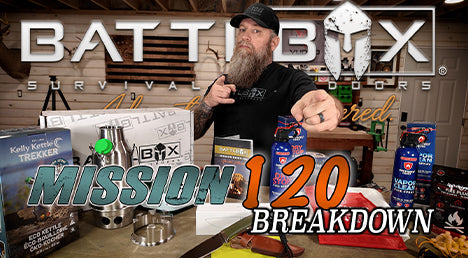Meghan Ham
Everything You Need to Know About Indoor Survival Garden
You never know when you must survive in a survival situation. Such emergency situations are the hardest to bear because most people never plan things. Many people do not have enough resources at home to help them survive for a few days or some weeks. Food is one of the basic requirements of life and having an indoor survival garden can be your perfect choice in emergencies.
Such a garden helps have enough food in emergencies when you cannot get out of your home. So, here we will be discussing everything you need to know about an Indoor survival garden.
What is an indoor survival garden?
An indoor survival garden is not like other gardens where you focus on beautifying plants. It is a garden where you specifically plant those plants that can yield food. Whether you plan to plant fruits or vegetables, one important thing to consider will be plants that you can easily manage indoors. So, the basic consideration will be their size.
How can you start your indoor survival garden?
It will be very easy to start if you have a gardening hobby. However, if you do not have a gardening hobby, things will still not be very hard to understand. Here is everything you need to know to state your indoor garden for survival.
1. Know which plants you are willing to start with
The first thing to start your indoor garden for survival is to know which plants you will start with. It is important because some vines and trees cannot grow indoors in small spaces. You also need to be very careful about maintenance. So, always plan which fruits and vegetables you will be planting. A better idea for beginners is to start with one or two plants and then expand the range.
2. Manage a light source
Now that you know about the plants you will be growing, it is time to plan where you will place your garden. There are 2 main things to consider:
- The plants must not interfere with your routine life
- Plants must get enough light and ventilation
Focus on these 2 points and select any location that seems the best inside your house. You can also go for artificial lighting and ventilation for plants. However, that will not be the most efficient or cost-effective ideas. Rooms with large amounts of windows or overhead sun lights are ideal.
3. Make sure that roots have a good room with proper drainage.
The next important thing for you to consider is the drainage for plants. There is enough evaporation and heat in outdoor plants that take any access water out of the soil. However, there will be no drainage or evaporation when you use plastic pots inside. It can cause roots to rot after some time. Additionally, you need to have pots that provide efficient room for the plants to grow without congestion. Do research on each plant you are growing, as they may be happier in clay or ceramic pots.
4. Research about the optimal temperatures for plant growth
Different plants have different growth temperatures. When the environment is colder or hotter than needed, it can be problematic for your plants. Even if they survive, they will not be very good at producing fruits, vegetables, or herbs. So, do your research and use your resources to maintain the optimal temperature range for plant growth and productivity.
5. Use fertilizers according to the plan.
If you want good production from your plants, you need to make a fertilization routine. You may set it according to the plants' requirements but following it is necessary. When you keep your plants in limited soil supply indoors, they may not get the best nutrients from that soil.
Regularly fertilizing soil makes sure that all the nutrients that your plants need are always available for your plants. Thus, it ensures healthy growth and higher productivity.
6. Never postpone harvesting
You must never postpone harvesting. Whenever the vegetables and fruits are ready, you must harvest them. Although this may include a longer cycle, things are different when talking about leafy greens. In that case, you may need to harvest daily. Having around 4-inch-tall leaves is more than enough for harvesting for some plants. Again, research is key for indoor gardens!
However, make sure that you never harvest more than 1/3 of any plant. It may hinder their growth and productivity.
7. Keep plants that will stay all year.
The last thing that you need to worry about is keeping plants that last all year. You never know when you may face a survival situation. So, having plants that last all year is beneficial. If you find it difficult to have those plants, you can keep half for one season and a half for the other. Keep a schedule of your plant rotations, so you are never left in a situation without the emergency food supply these plants provide.
It will ensure that you always have enough survival food supply no matter what part of the year it is.
How to increase the efficiency of your indoor survival garden?
Knowing how to make your indoor garden for survival alone is not enough. For the best experience, you must consider making things efficient. So, here is how you can increase the efficiency of your indoor garden for survival.
· Rely on natural light and ventilation
The first thing to focus on is natural light and ventilation. It is best for plants, and it will also help you stay sustainable and cheap on power bills. If you necessarily need artificial lighting and ventilation, then sustainable energy sources will be your best choice.
· Use old plants to make new ones.
Next, you need to save on seeds. You can use different plantation techniques to grow new plants from the older ones. It is also possible to grow plants from the yield seeds to save seeds.
· Reuse the soil
You can reuse the old soil by treating it. In this way, you will have a very sustainable system.
Final Verdict
It does not matter if you have a gardening hobby or not. Preparing for survival situations is necessary for everyone. So, when you are preparing food, you must plan for your indoor survival garden. These provide you with natural food for days without any issues. So, these indoor gardens for survival could be the best option in any indoor survival situation.
Image by EmileKerss from Pixabay
Share on:

















